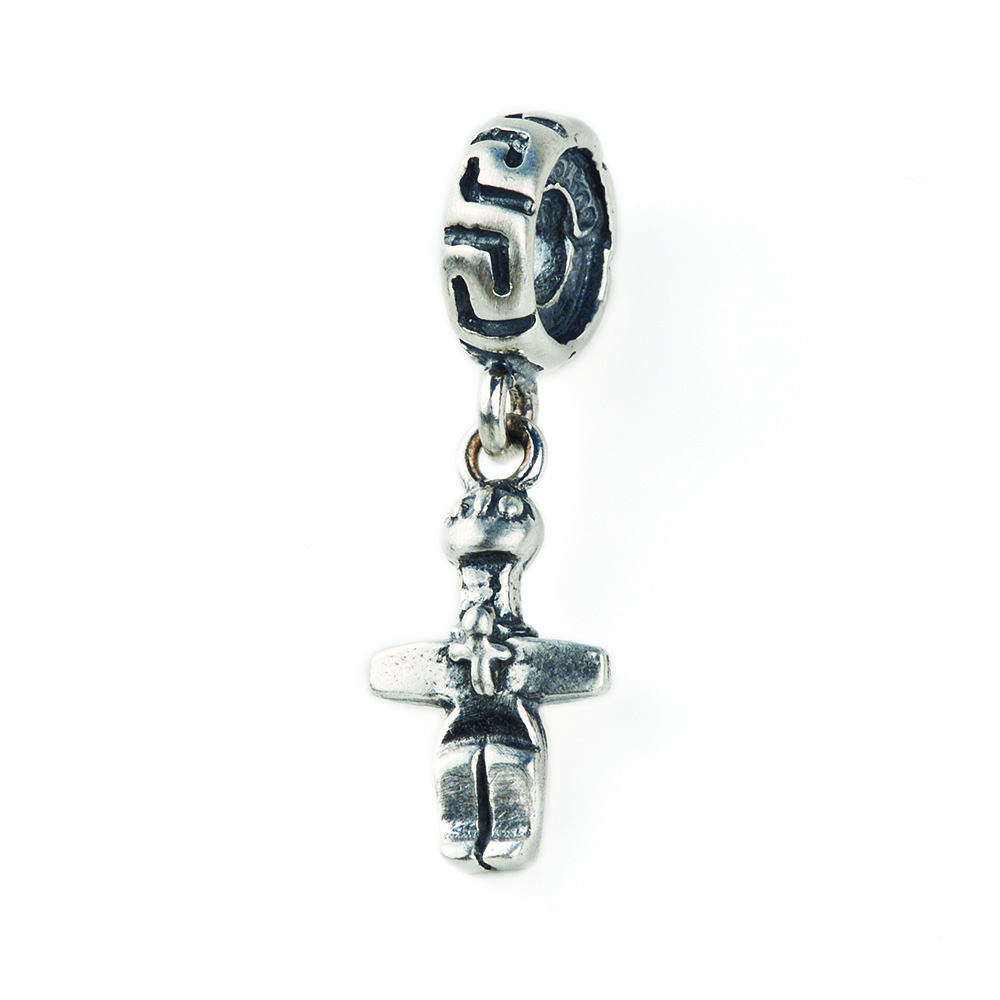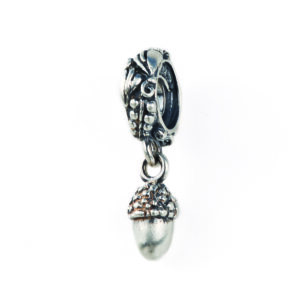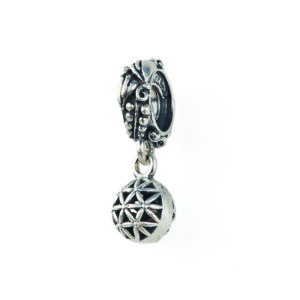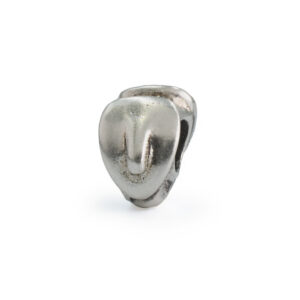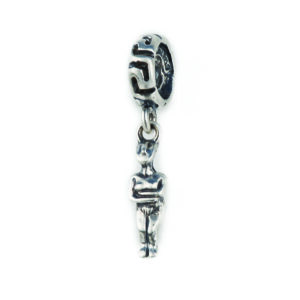Cyprot figurine dangle
€58.00
A premium quality hanging charm.
Handcrafted in Sterling silver 925 in our workshop in Athens.
Description
Cypriots were very productive in terracotta sculptures of all sizes. The ceramic workshops that specialized in the manufacture of figurines were often located close to important sanctuaries. The simpler figurines were handmade. They had cylindrical bodies and crude faces; in some cases, plain clay trails or pellets were added to form such features as hats, eyes, ears etc. (the so-called snowman technique). A small number of figurines were thrown on the potter’s wheel. From the 7th c. BC onwards, increasing demand led to the introduction of the mould for the mass production of figurines.
During the Early and Middle Bronze Age (c. 2000-1600 BC) plank-shaped statuettes made of clay became the most common form of human representation in Cypriot art. They are highly stylized, with flat rectangular body and a narrower head and neck. Facial features and ornaments are indicated by incised and painted patterns (similar to those appearing on Red-Polished or White-Painted vases) with the exception of noses and occasionally ears and breasts that are often modelled. In some cases, a single body is crowned by two heads. There are also examples of female figures holding a child. Such figurines are usually found in tombs, although a few come from settlement contexts. Their appearance is generally associated with migrants from Anatolia, where similar figurines were used from an earlier date.
During the Early Cypriote III – Middle Cypriote I period (c. 2000-1900 BC), plank-shaped figures were sometimes copied in stone (e.g. chalk, limestone, gypsum, alabaster, and occasionally local marble). Stone figures are rare and come mainly from graves. They are comparatively large in size and extremely schematic in style. They have a plain rectangular body with angular protrusions for the arms. Some have pierced ears and bear traces of paint or punctured dots on the face. It is possible that stone figures were originally painted all over or adorned with jewellery, as suggested by the decoration on terracotta examples.
A very interesting and meaningful pendant representing a beautiful period of art.


